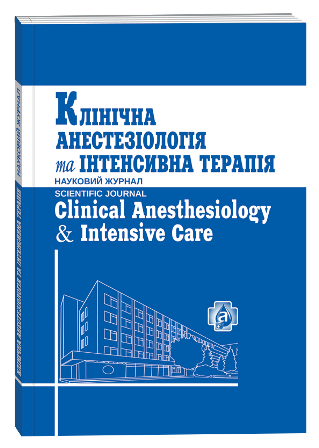EXPERIENCE IN THE DIAGNOSIS AND MONITORING OF CRITICAL HEMOSTATIC DISORDERS
Keywords:
hemostasis, thrombo-hemorrhagic disorders, low-frequency piezothromboelastography, hemostatic potential, the personification of therapyAbstract
Background. Acute massive blood loss, along with traumatic shock are not only the leading cause of death, but also the formation of multiple organ dysfunction syndrome (MODS) — the logical outcome of the past critical states. Aim. To demonstrate the practical use of “global” laboratory test — the lowfrequency pyezothromboelastography in assessing and monitoring hemostatic disorders in critical conditions (hemorrhagic shock, posttraumatic thrombohemorrhagic complications). Materials and methods. There were examined 120 conditionally healthy volunteers and 12 patients with massive blood loss in the volume from 1000 to 4000 ml. Results. There were identified statistically significant differences in the estimated parameters of the RASK system in patients with massive blood loss from those of healthy individuals in all links, reflecting the process of whole blood clotting and genesis of fibrin (initiation, amplification, extension, lateral assembly and the formation of cross-linked fibrin) vascular-platelet, coagulation and fibrinolytic. Conclusions. It is shown that the analysis of the hemostatic potential of whole blood by low-frequency piezothromboelastography in real time mode allows you to identify critical hemostatic disorders and to establish an adequate management of their correction.
References
Бокарев И. Н. Тромбозы и противотромботическая терапия в клинической практике / И. Н. Бокарев, Л. В. Попова, Т. В. Козлова. – М. : Мед. информ. агентство, 2009. – 416 с.
Воробьев В. Б. Анализ состояния гемостаза с использованием новых возможностей дифференцированной электрокоагулографии / В. Б. Воробьев, Н. А. Бехтерева, Т. В. Ускова // Фундаментальные исследования. – 2004. – № 5. – С. 19–21.
Долгов В. В. Лабораторная диагностика нарушений гемостаза / В. В. Долгов, П. В. Свирин. – М. : Триада, 2005. – 227 с.
Venous Thromboembolism, Trombophilia, Antithrombotic Therapy, and Pregnancy American College of Chest Physicians Evidence-Based Clinical Practice Guidelines (8th Edition) / S. M. Bates, I. Greer, I. Pabinder [et al.] // Chest. – 2008. – Vol. 133. – P. 844–886.
Thromboelastography. Present and future perspectives in clinical practice / P. Di Benedetto, M. Baciarello, L. Cabetti [et al.] // Minerva Anestesiol. – 2003. – Vol. 69. – P. 501–515.
Thromboelastography / H. Reikvam, E. Steien, B. Hauge [et al.] // Transfusion and Apheresis Science. – 2009. – Vol. 40 (2). – P. 119–123.







